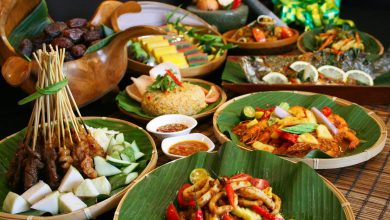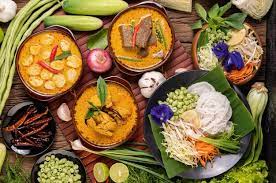Discovering the Culinary Delights of Malaysia: A Gastronomic Journey
Discovering the Culinary Delights of Malaysia
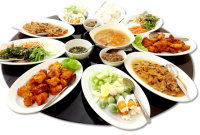
Malaysian cuisine is a harmonious blend of flavors, textures, and aromas that reflect the cultural diversity of this vibrant nation. Renowned for its rich and diverse culinary heritage, Malaysian food is a testament to the fusion of Malay, Chinese, Indian, Thai, Javanese, Sumatran, and even Middle Eastern flavors. In this article, we unravel the essence of Malaysian cuisine, exploring its famous dishes, its national pride, and the distinct identity that makes it truly Malaysian.
What is Malaysia’s Famous Food?
Malaysia is famous for its diverse range of dishes that cater to all taste buds. Some notable dishes that have gained international acclaim include:
1. Nasi Lemak:
Nasi Lemak is often considered Malaysia’s national dish. This fragrant rice dish is typically served with anchovies, peanuts, boiled egg, cucumber, and sambal (spicy chili paste). The blend of flavors and textures in Nasi Lemak truly embodies the essence of Malaysian cuisine.
2. Roti Canai:
The popular Malaysian flatbread known as roti canai is soft on the inside and crispy on the outside. It is frequently served with different varieties of curry or dhal, a lentil curry. This meal is a morning staple in Malaysia and a hit with both residents and visitors.
3. Char Kway Teow:
Char Kway Teow is a stir-fried rice noodle dish infused with flavors from shrimp, bloody cockles, Chinese lap Cheong (sausage), eggs, and chives. The smoky aroma and tantalizing taste make it a must-try.
4. Satay:
Meat on skewers is grilled, and satay is frequently accompanied with a peanut sauce. This dish is a favorite street snack in Malaysia and Southeast Asia and is a traditional Malay meal.
5. Laksa:
Laksa is a hot, coconut milk-based noodle soup.It comes in various regional variations, with the most famous being Penang Laksa and Sarawak Laksa. Each variant offers a unique blend of spices and ingredients.
What is Malaysia’s National Dish?
As mentioned earlier, Nasi Lemak is widely regarded as Malaysia’s national dish. The dish perfectly encapsulates the country’s culinary essence with its aromatic rice, fiery sambal, crunchy anchovies, and a boiled egg. Malaysians often enjoy Nasi Lemak for breakfast, making it a cherished part of their culinary culture.
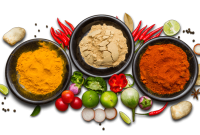
What is the Name of Malaysian Cuisine?
The name of Malaysian cuisine is simply Malaysian cuisine. It is a beautiful amalgamation of the flavors and traditions of the many ethnic groups that call Malaysia home. From the rich and spicy Malay dishes to the diverse and flavorful Chinese stir-fries, and the aromatic and vibrant Indian curries, Malaysian cuisine is a testament to unity in diversity.
In conclusion, Malaysian cuisine is a delightful journey through a symphony of tastes and cultures. From the savory flavors of Nasi Lemak to the spicy notes of Laksa, each dish tells a story of Malaysia’s diverse cultural heritage. The cuisine is an invitation to discover the country’s rich traditions, one delicious bite at a time.
What is Malaysia’s Famous Food with recipie
Malaysia boasts an array of renowned dishes, each with its own distinctive flavors and characteristics. Let’s explore some of the most famous Malaysian dishes and learn how to prepare them.
1. Nasi Lemak:
Nasi Lemak, frequently referred to be Malaysia’s national dish, is a delicious medley of fragrant rice, spiciness from sambal (chili paste), crunch from peanuts, freshness from cucumber, and crispy anchovies. Here is a straightforward method to make this well-known Malaysian dish:
Ingredients:
- 2 cups jasmine rice
- 1 can coconut milk
- Pandan leaves
- Salt to taste
Instructions:
- Wash the rice and drain well.
- Combine rice, coconut milk, pandan leaves, and a pinch of salt in a pot. Cook until the rice is fluffy and the liquid is absorbed.
- Serve the rice with sambal, anchovies, peanuts, boiled egg, and cucumber.
2. Roti Canai:
The popular Malaysian flatbread known as roti canai is flaky on the outside and mushy on the inside. It frequently comes with dhal, a lentil curry. Here is a recipe for homemade Roti Canai:
Ingredients:
- 500g all-purpose flour
- 1 egg
- 1 cup milk
- 1/2 tsp salt
- Ghee or butter for frying
Instructions:
- Mix the flour, egg, milk, and salt to form a dough. Let it rest for a few hours.

Advantages of Malaysian Cuisine
Malaysian cuisine offers a multitude of advantages that contribute to its popularity both locally and internationally:
1. Diverse and Nutrient-Rich:
The variety of dishes in Malaysian cuisine ensures a balanced diet with a wide range of nutrients, including essential vitamins, minerals, and fiber.
2. Cultural Harmony:
The cuisine represents the cultural harmony and diversity of Malaysia, showcasing a blend of traditions, ingredients, and cooking methods from different ethnic groups.
3. Delicious and Flavorful:
The fusion of various spices and herbs ensures a burst of flavors in every bite, making Malaysian dishes both satisfying and delicious.
Disadvantages of Malaysian Cuisine
Although Malaysian food is a delight for the palate, there are a few downsides to be aware of:
1. Energy-Dense:
As a result of the usage of coconut milk, oils, and fried components, many Malaysian recipes are high in calories. Weight-related problems might result from overindulgence.
2. High in sugar and sodium
Some foods, especially sauces and condiments, can be high in sodium and sugar, which may make them more likely to cause conditions like diabetes and high blood pressure.
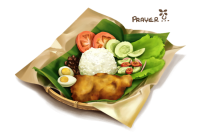
Last but not least, Malaysian food is a tantalizing study of flavors and cultural traditions. Every dish, from the creamy Nasi Lemak to the crunchy Roti Canai, tells a tale of Malaysia’s rich culinary tapestry. It’s an invitation to enjoy the rich traditions of the country one morsel at a time.
